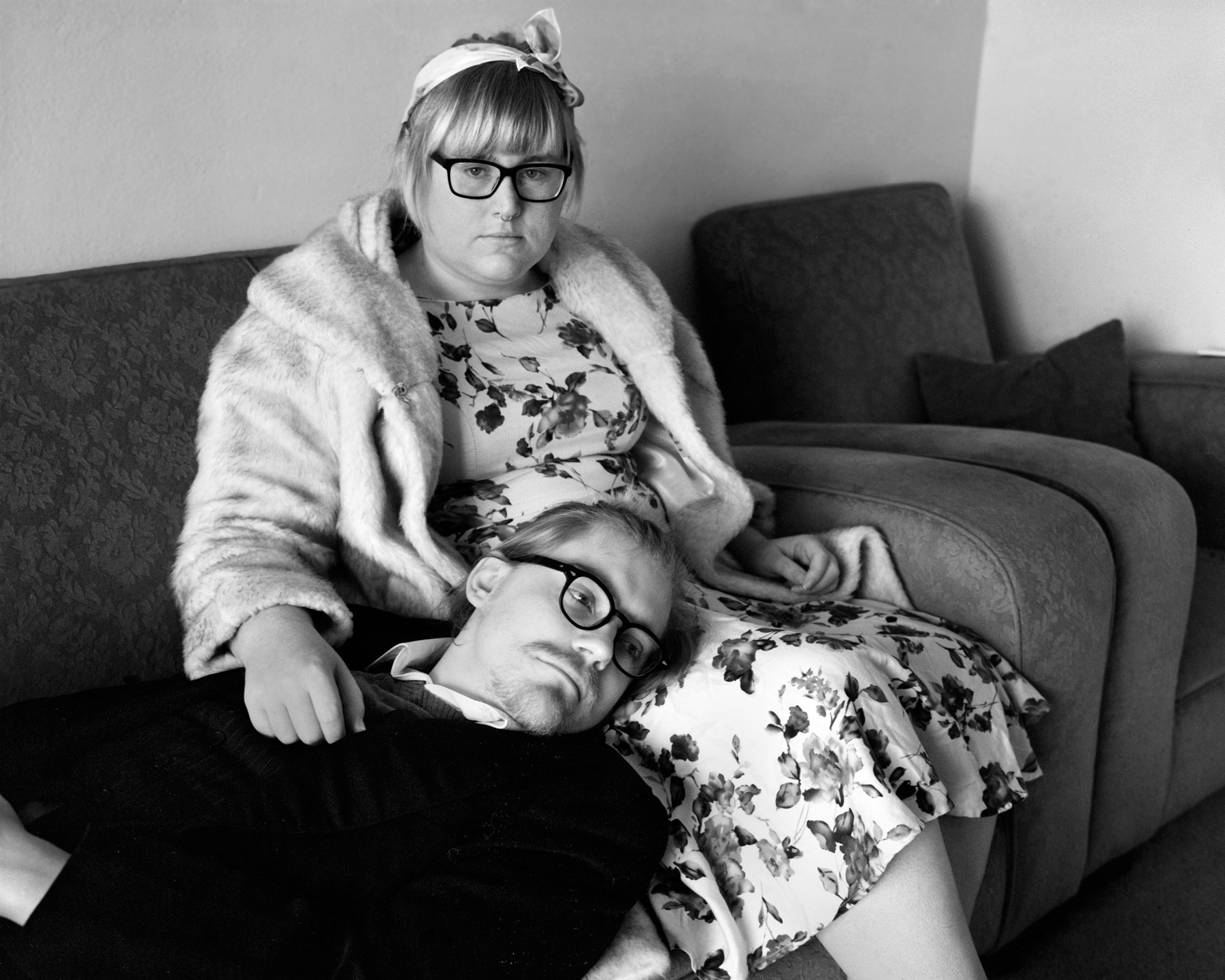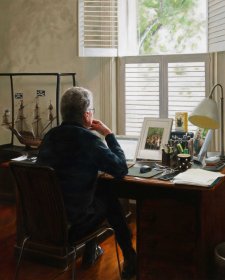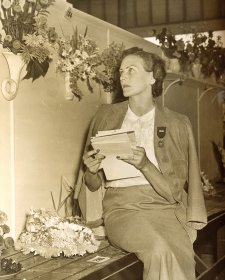I met Clara while teaching photomedia at the University of Tasmania last year. One of her assignments focused on her relationship with her former boyfriend, who she now works for as his live-in carer. Clara’s work was beautifully thought-out, full of love and pain. It was titled, Dante’s Inferno. Intrigued, I wanted to make my own portrait of their relationship.
We organised to make my picture in their apartment above City Park, in Launceston. Clara wore her grandmother’s fur coat. Keagan wore his tuxedo and Doc Martens. They sat on her grandmother’s sofa and started role playing, using just their facial expressions. They were exploring their relationship for the camera, not knowing what the other was doing. Neither said a word or interacted with each other. I was a silent observer. I felt the portrait session was almost like an independent ‘he said, she said’, where they both had an opportunity to explore their roles.
My photographs are psychological portraits. The camera has a piercing gaze; it’s so revealing, as though it has a special power to see things not visible to the naked eye.
I wanted to be a psychologist while I was at university, but my passion for photography – combined with my love for exploring and storytelling – led me to an early career in photojournalism, then on to my current profession of photomedia artist.
I am always gently digging to find out how someone’s mind works. I try to tell personal stories that reflect what is happening in a broader social and historical context. After Dante’s Inferno is part of a larger body of work examining growing up on the island of Tasmania, at the edge of the world.
Clara’s story of love is one many of us have experienced. She writes: ‘My first love is a dance with many steps. We live through a subtle co-dependency. I have had to learn a great deal of what love is for this man so that we may occupy the same space and exist in harmony, otherwise we become villains to one another, comical and cartoonish but nonetheless sinister and cruel.’














